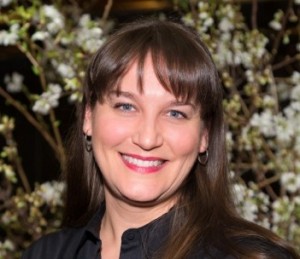JETs in the News: Matt Cook featured in hometown paper
**************
Very nice article on JET alum and former AJET Chair Matthew Cook (Osaka-fu, 2007-12) that recently appeared in the newspaper of Matt’s hometown, Danville, Virginia and describes his path from the JET Program to becoming a key player in Osaka’s pioneering English education reform efforts.
Danville man appointed to Japanese board of education
By DENICE THIBODEAU
dthibodeau@registerbee.com
Thibodeau reports for the Danville Register & Bee.
May 10, 2014
When Danville native Matthew Cook headed to Osaka, Japan, in 2007 to take a job as an education specialist and trainer in the Japan Exchange and Teaching Program, little did he realize he would end up working for a Japanese government agency to completely reform how English is taught in the city.
CLICK HERE to read the rest of the article: http://m.godanriver.com/news/danville/danville-man-appointed-to-japanese-board-of-education/article_1b9620f2-d972-11e3-8adc-0017a43b2370.html?mode=jqm#.U3A0DN98uYw.facebook
JET alum Roland Kelts on Japan’s “Generation Resignation” in Adbusters
*****************
Another thought provoking article by JET alum author and writer Roland Kelts(Osaka-shi, 1998-99), this one in the current issue of Adbusters.
The Satori Generation
A new breed of young people have outdone the tricksters of advertising.
Roland Kelts, 07 May 2014
They don’t want cars or brand name handbags or luxury boots. To many of them, travel beyond the known and local is expensive and potentially dangerous. They work part-time jobs—because that is what they’ve been offered—and live at home long after they graduate. They’re not getting married or having kids. They’re not even sure if they want to be in romantic relationships. Why? Too much hassle. Oh, and too expensive.
In Japan, they’ve come to be known as satori sedai—the “enlightened generation.” In Buddhist terms: free from material desires, focused on self-awareness, finding essential truths. But another translation is grimmer: “generation resignation,” or those without ideals, ambition or hope.
CLICK HERE to read the rest on ADBUSTERS: https://www.adbusters.org/magazine/113/satori-generation.html
Click here to read more of Roland’s articles from Adbusters: https://www.adbusters.org/authors/roland_kelts
CLAIR Magazine “JET Plaza” Series: Yuri Lowenthal (Shiga)
Each month, current and former JET participants are featured in the “JET Plaza” section of the CLAIR Forum magazine. The May 2014 edition includes an article by JET alumnus Yuri Lowenthal. Posted by Celine Castex (Chiba-ken, 2006-11), currently programme coordinator at CLAIR Tokyo.
***********
Yuri Lowenthal (Shiga-ken, 1993-96), grew up in Nashville, Tennessee, but moved all around the world because his father was in the Foreign Service, so he went to elementary school in Nashville, Junior High in Niamey, Niger, and then college back in Williamsburg, Virginia at the College of William and Mary. His hobbies are mostly entertainment related, and he’s managed to make a living at it! He joined the JET Programme because it joined his love for Japan and adventure, and had no idea that it would prepare him for one of the most difficult yet rewarding professions, acting.
My JET Programme Experience: How Do You Prepare for the Unknown?
Who knows what the future will bring? I guess we all have an idea. I thought I knew what was going to happen. Surely I would continue work as a CIR in Shiga Prefecture as long as they would let me, then find another job in international relations, just like my father. I was having a blast working in Shiga prefectural office doing everything from helping ALTs troubleshoot issues in their schools or in their lives, keeping the ALT community informed with newsletters, teaching English to cadets at the local police academy, translating, interpreting and fielding the occasional letter to the Governor from a man who believed that aliens were working with the Japanese government on time-travel experiments and mind-control. I had been in love with Japan since I was a kid, and this was the perfect life for me. Now I am an actor, writer and producer living in Los Angeles. What happened? Life, I suppose. We all change, and the best experiences change a person greatly. My experience in Japan constantly forced me to question my preconceived notions of things and stay open to many different kinds of ideas. It is what made me stay in love with Japan. Because of my father’s work, I had visited many countries all over the world, but there was something different about Japan. Every day gifted me with something new, excited me with mysteries, and kept me interested.
While working in Japan I was also able to explore my love of the arts. I studied Butoh dance in Kyoto, Kabuki, Bunraku and Kyogen in Osaka, and made short films with my friends (often, much to the confusion of the people around us.) One day I realized that, as much as I loved living and working in Japan, I had to try my hand at acting for a living, much in the same way I took a big chance and came to live and work in Japan because I loved that so much. But I did not leave Japan behind when I returned to the US. I came home with a confidence that I did not have before my experience with JET: the confidence I built as a CIR, working with all different kinds of people, both from Japan and other countries; learning to solve problems creatively and on-the-fly; developing and maintaining relationships with people, both personal and business; teaching and allowing myself to be taught. And because you never know how what you learn at any given time will come in handy later, I had no idea that when I came back to the States that I would use the Japanese language I had honed to work with Japanese clients in TV and film production in New York City.
The money I had saved during my time in the JET Programme gave me the time and space to create the relationships that led to actual work that would employ what I learned working for the local government in Shiga Prefecture. These skills would allow me to work with Brad Pitt for a Japanese jeans commercial, produce an episode of Beat Takeshi’s nature program in the Bahamas, and get into a harrowing altercation with an angry chimpanzee for a show about two Japanese comedians visiting the US. And then, when I got married and moved to Los Angeles, I began working in the anime-dubbing business. While knowledge of Japanese is not essential to the work, it has been one very important skill that has set me apart from most of my other colleagues. Many of the characters I have played have been Japanese. And because so much of my work is voice acting, I have been able to play the roles because of my experiences and the skills I developed in Japan despite the obvious fact that I do not look Japanese! In the competitive world of acting, an advantage like this is hugely empowering. Read More
Japan Times: Osaka Embraces English Reformation
Former AJET Chair Matthew Cook (Osaka-fu, 2007-12) has been heavily involved in this cutting edge effort to improve Osaka’s English education system and is quoted in the article.
Osaka embraces English Reformation
BY TERU CLAVEL
While Osaka Mayor Toru Hashimoto’s controversial political antics have increasingly drawn criticism, little attention has been paid to how his leadership has prompted the most progressive reforms of English-language education in the nation. Hashimoto, who served as Osaka’s governor from 2008-11, made possible the appointment of fellow Waseda Law School graduate Toru Nakahara as superintendent of the Osaka Prefectural Board of Education, charging him with the task of empowering students to compete on a global stage.
Only in Osaka will students in the public school system have the opportunity to start preparing for the TOEFL iBT — an internationally recognized English-language proficiency exam for non-native speakers administered over the Internet that tests reading, writing, speaking and listening skills for entrance to English-speaking university overseas — in grade one of primary school.
With the urging of Mayor Hashimoto, Nakahara — who also graduated from the University of Michigan Law School and was a practicing attorney at a California firm for 10 years — left the private sector and took a substantial pay cut to become the principal of Izumi High School in Osaka in 2010. In 2013, Nakahara became Japan’s youngest-ever superintendent at age 42, overseeing 1,600-plus schools, and he formed what is known as the English Reformation Project Team.
Nakahara’s accomplishments in the United States and at Izumi High School have led him to be recognized as an education innovator.
“One thing I noticed when I was in Ann Arbor (Michigan) Read More
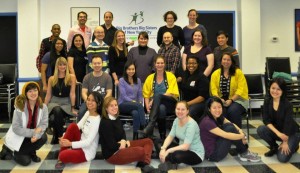
Members of the JET Alumni Association of New York volunteering in the annual Japan-a-Mania community event with Big Brothers Big Sisters of New York City, January 2014. (Courtesy of Monica Yuki)
By Eden Law (Fukushima-ken, 2010-11) for JQ magazine. Eden is JETAA New South Wales‘s webmaster, meaning he is the voice on all the online and social media for the Sydney-based chapter like Twitter, Instagram (both @jetaansw) and Facebook. Outside of JETAA, he doesn’t exist, and is merely a concept of a shadow of a dream of an enigma, wrapped in mystery and served with a side of salad.
Introduction
The following is a shamelessly biased opinion: Being a member of JETAA is fantastic. One gets to help organise and be involved in events and projects that reach the general public here in Sydney (like the Japan Festival), hang out with a great group of like-minded people that know all the best Japanese places to eat, drink and be merry, and who are rarely inhibited in any karaoke session. There is ample opportunity to new people constantly, both inside and outside that chapter’s home city’s J-community, so in a way, the JET experience never truly ends.
That’s a personal assessment of what it’s like being a member of JETAA, the alumni association for former JETs. JETAA chapters exist all over the world from where the JET Programme has drawn its recruits. They give former JETs a way to connect with their local J-community and like-minded peers, and are essentially a non-profit social organisation with a Japanese cultural bent. And because JET is made up of a diverse group of people from all walks of life, JETAA chapters have great potential as a resource with links in government, business, education, academia and social networks.
But it can’t be denied that many chapters struggle with visibility or relevancy, in attracting members to events or to join their committees. The last point is especially important, as new members help to keep the organisation dynamic and active. And while the reasons for this are different for every situation, some similar and salient points can be discerned, notably from online forum comments (like LinkedIn). While a comprehensive discussion can probably fill a volume or ten, this article will nevertheless discuss these points.
So what does JETAA have to deal with?
JET alum Michael Auslin’s commentary on NATO’s relevance in Forbes
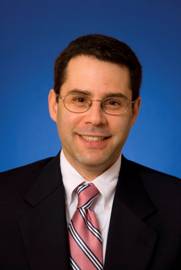 JET alum Michael Auslin, Resident Scholar and Director in Asian and Security Studies at the American Enterprise Institute, has a new article in Forbes magazine titled “No Need to Argue for NATO’s Relevance.”
JET alum Michael Auslin, Resident Scholar and Director in Asian and Security Studies at the American Enterprise Institute, has a new article in Forbes magazine titled “No Need to Argue for NATO’s Relevance.”
http://www.forbes.com/sites/realspin/2014/04/04/no-need-to-argue-for-natos-relevance/
JET alum featured on ABC News for building tsunami-proof ark
Thanks to JETAA DC’s Mac Maloney for alerting JETwit to this:
Fukushima JET alum Chris Robinson, former art director for Facebook who lives in Palo Alto, CA, is featured in this ABC News segment. It explains how he lived in Fukushima during the tsunami and how a few years later he decided to build an ark in the event of a tsunami. Notably, he specifically mentions the JET Program in the interview. Very cool video. Have a look:
http://news.yahoo.com/video/modern-day-noah-makes-tsunami-154204077.html
More photos here: http://architizer.com/blog/tsunami-pod/
Interview with Chris in Wired here: http://www.wired.com/2014/03/tsunami-lifeboat/
And here’s Chris’ blog, Tsunamiball: http://tsunamiball.com/
More video, from the Wired interview that explains the details of the ark:
Japan Times features JET alum Matthew Cook and his work with Osaka’s English Reformation Project Team
****************************
Very nice article on JET alum and former AJET Chair Matthew Cook (Osaka-fu, 2007-12) about his path from JET to becoming an agent of change for the Japanese English education system through is unique role with Osaka Prefecture’s Board of Education. Matt is also the founder of the Kansai JET Alumni group. FYI, you can also click here for a recent JQ profile of Matthew Cook by JETAA New South Wales‘ Eden Law (Fukushima-ken, 2010-11) .
Changing the system starts by challenging it
BY TERU CLAVEL
Just seven years after first participating in the JET program in Osaka, Matthew Cook from Danville, Virginia, is making great strides as a pioneer of English-language education reform in Japan. Having never previously been to an Asian country, Cook is now one of seven members of Osaka’s groundbreaking English Reformation Project Team, having been appointed by Osaka superintendent Toru Nakahara in 2013. With an unswerving commitment to English-language education and a little luck, Cook’s efforts may pave the path for Japan’s next generation of global leaders.
Cook applied to the JET (Japan Exchange and Teaching) program because it was “the most lucrative, stable and safe way to get to Japan.” Having run his own karate dojo in the United States, he felt the need to gain a deeper understanding of the Japanese culture behind it. However, Cook was waitlisted and needed to make a snap decision when he was offered a position within a month of the JET start date. “I had totally assumed that I wasn’t going to get in,” he says.
Cook’s initial placement was less than ideal, though. He was forewarned that the Osaka junior high school to which he was assigned might be challenging, but he was not prepared for the “few students who were stopping class altogether, violence in the classroom or kids getting up and leaving.” Read More
JQ Magazine: From JET to Japan-Related Jobs – New York Edition
By Brett Rawson (Akita-ken, 2007-09) for JQ magazine. Brett is a writer, translator, and volunteer. He currently lives in New York, where he is pursuing an MFA in creative writing at The New School and is the professional development chair for the JET Alumni Association of New York. If you have job opportunities for JET alums, an interest in presenting at JETAANY’s annual Career Forum, or want to collaborate on professional endeavors, contact him at career@jetaany.org.
If you listen closely, the age-old JET adage every situation is different can be heard echoing around the world. This is because it’s said so frequently, but that’s because there is truth to the takeaway: Paths to JET, experiences in Japan, and adventures thereafter run in every direction. But when the stories sit side by side, a greater context for, character of and meaning to the program and participants, takes solid shape.
Below are features on three New York City-based JET alumnae. Each carved a unique path to, on, and from the program, but they share one incredible thing in common: they are working at three of the largest Japan-related non-profit organizations in the world. For those interested in following in their professional footsteps, JQ would like to introduce to you them and share their advice about entering the world of Japan-related non-profits.
Meet Christy Jones, Director of Special Events at Japan Society
ALT, Shimabara-shi, Nagasaki-ken, 1995-98
Born and raised in Upstate New York, Christy received a degree in cultural anthropology and a certificate in Asian and African Languages and Literature from Duke University. That was the closest she could get to a degree in Japanese, but it wasn’t the closest she got to Japan: Her junior year, she studied abroad at Kansai Gaidai University in Osaka. But that stint didn’t quite quench her thirst for the cuisine and culture. The following fall, she applied to JET, got accepted, and returned to Japan—but this time for three years.
Christy served as an ALT at an academic high school in Shimabara-shi in Nagasaki. Thinking back, she has very fond memories of her time on JET: “As this was the pre-Internet era, I didn’t know much about Nagasaki beyond the atomic bomb,” she says. “I came to appreciate the rich international history of the area, along with the stunning natural beauty. Some of my happiest moments were traveling around Kyushu, visiting fellow JETs in their own towns, checking out the local onsens, cafes, and izakayas, and taking thousands of photos. I was befriended by a number of local residents, which allowed me to have some uniquely Japanese experiences: delivering mail as an honorary ‘Postlady for a Day’; making yakimono in a backyard pottery studio and kiln; watching a bonfire-lit Noh performance at the base of a castle; and marching in the city’s annual parade dressed like a Portuguese missionary.”
When Christy returned home, she let her experience settle. “Eventually,” she recalls, “I visited NYC to attend JETAANY’s annual Career Forum, which happened to be held at Japan Society that year.” She connected with a couple of headhunters and landed a job working as an administrative assistant for a subsidiary of Sumitomo Chemical for two years, but the work itself didn’t fulfill her: “My workday ended at 5:30 sharp, so I started volunteering at the nearby Japan Society events as an usher and ticket-taker,” which is when everything began to change.
JET alum Harry Hill named Chairman of U.S. CULCON
 Here’s a link to the official post on the CULCON website: http://culcon.jusfc.gov/news/harry-hill-becomes-chairman-of-u-s-culcon
Here’s a link to the official post on the CULCON website: http://culcon.jusfc.gov/news/harry-hill-becomes-chairman-of-u-s-culcon
FEBRUARY 18, 2014
The Japan-U.S. Friendship Commission and the U.S. CULCON Panel are pleased to announce the appointment of a new Chairman, Mr. Harry A. Hill.
Mr. Hill, a native of New York City, has served as President and CEO of Oak Lawn Marketing, a branding and media company that owns Shop Japan, the largest infomercial brand in Japan, since 2006. He brings with him a wealth of experience related to educational and cultural exchange and entrepreneurship, having lived and worked in Japan for nearly thirty years. Mr. Hill served as a participant on the Japan Exchange and Teaching Programme and its precursor program, the Monbusho English Fellows from 1987-1990 in Gifu Prefecture, where he created a strong network of individuals and government officials who would later help him in building his professional career. His extensive professional experience includes founding H&R Consultants, a leading lease providing and relocation service in Tokyo and Nagoya. In addition, Mr. Hill has been actively involved in numerous charitable and non-profit organizations, including the U.S.-Japan Bridging Foundation, where he has been a member of the Tokyo Advisory Committee and long-time sponsor of its scholarship program. “Mr. Hill will be an asset to the Japan-U.S. Friendship Commission and CULCON, bringing strong leadership experience as a successful entrepreneur, and a deep passion for strengthening the U.S.-Japan relationship through educational and cultural exchange,” says Executive Director Paige Cottingham-Streater. Mr. Hill’s expertise on Japan and cross-cultural communication skills will further advance the Commission and CULCON’s efforts to invest in Japanese and American studies, people-to-people exchanges and artistic and cultural initiatives.
Mr. Hill succeeds Read More
CLAIR Magazine “JET Plaza” Series: Don Brown (Osaka)
Each month, current and former JET participants are featured in the “JET Plaza” section of the CLAIR Forum magazine. The March 2014 edition includes an article by JET alumnus Don Brown. Posted by Celine Castex (Chiba-ken, 2006-11), currently programme coordinator at CLAIR Tokyo.
***********
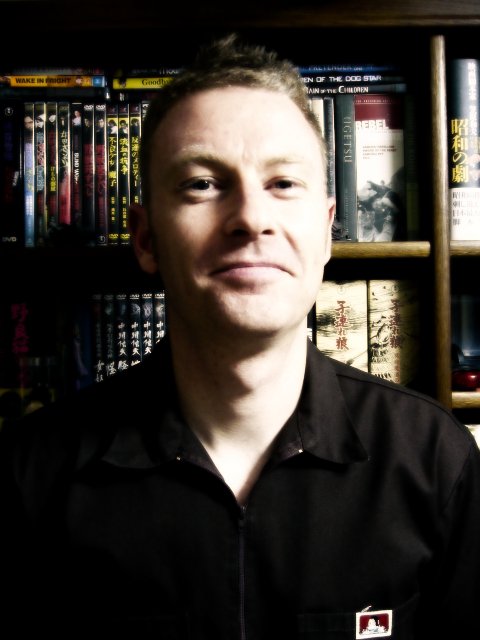
“I’ve been in Japan for 14 years now, but those first three in Kawachinagano were the most thrilling and character-building. Without them, I wouldn’t be where I am now, and thanks to JET, I’m now doing exactly what I always wanted to do.”
Originally from Auckland, New Zealand, Don Brown (Osaka-fu, Kawachinagano-shi, 1999-2002) majored in journalism and Japanese at university and worked in television before taking part in the JET Programme as a CIR. He subsequently remained in Japan and held several jobs including Public Affairs Officer at the New Zealand Embassy in Tokyo before becoming a freelance subtitler and translator specializing in Japanese film. In 2013, films for which he provided English subtitles were screened at the Cannes and Venice film festivals.
20/20 Hindsight
Somehow I doubt that I’m the only JET Programme participant who looks back on their time with regret. Now don’t get me wrong – this isn’t the beginning of some bitter diatribe. When I say regret, I mean along the lines of “I wish I’d spoken to that colleague more,” or “I wish I’d reacted differently in that situation,” or “I wish I’d done more in the time I had.” It wasn’t until my time on the Programme was up that I became fully aware of how lucky I’d been to have lived and worked in Kawachinagano.
No, you can’t ski there. Despite the “nagano” in the name, the city is located in the southeast of Osaka, on the border with Nara and Wakayama. Or as I liked to explain, the heel in Osaka’s boot. 70% of the city is forest (toothpicks and bamboo blinds are its major exports), and it even boasts mountains and a lake, but it’s only about a half-hour train journey away from downtown Namba. Try finding a place to live with those favorable specifications in Tokyo. I couldn’t.
The first time I stepped off the train at Kawachinagano Station on the Nankai Koya line, I instantly had a gut feeling that I was in the right place. My supervisor and a couple of other senior staff members from my division treated me to dinner at a conveyor belt sushi joint, made sure I had everything I needed at my apartment, and even helped me to acquire a bike. At the end of my bewildering first day at the office, the shy junior staff shuffled over to my desk in a tight formation and engaged me in conversation. Pretty soon, they were taking me out to massacre songs in two languages at karaoke and flail away in vain at lethal velocity baseballs at the batting center. Members of the international friendship association welcomed me into their homes and treated me like their long-lost son, only paler and frecklier.
Having never studied in Japan prior to JET, let alone translation and interpreting, being thrown into the deep end forced me to develop skills I still depend on today. It also dispelled all the preconceived notions about Japan and Japanese people that I’d accrued over the years from reading books and watching films back home, and gave me my first revelatory glimpses of what living and working in Japan was really like for flesh-and-blood Japanese people. As well as my colleagues in the cultural division and the international friendship association, my job brought me into contact with people from many and varied walks of life. Teachers and school children, sake brewers, calligraphers, firefighters and police officers, rice farmers, prefectural governors, World Cup organizers, and the diverse local foreign community. Coming from a wee island in Auckland’s Hauraki Gulf with a fluctuating population of only a few thousand, calling my time in Kawachinagano “eye opening” would do the place a gross disservice. “Mushroom-free consciousness expanding” is more like it. Read More
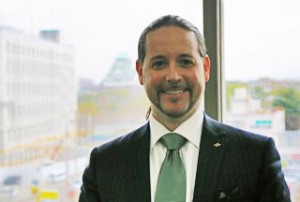
“I didn’t have any idea what I was getting into when I arrived as a JET, or if I would even be here longer than a couple of years. However, working for the future of these children, and trying to give them more opportunities in their future, has become my greatest personal accomplishment and given my life new meaning.” (Courtesy of Matthew Cook)
By Eden Law (Fukushima-ken, 2010-11) for JQ Magazine. Eden is a member of JETAA NSW, based in Sydney, Australia, which is part of the thriving JETAA Oceania community that covers Australia and New Zealand.
As a JET Programme success story, that of Matthew Cook (Osaka-fu, 2007-12)’s must surely rank as being one of the most extraordinary and inspiring. Hailing from Blacksburg, Virginia in the U.S., Matthew’s interest in Japanese martial arts led to his participation on JET. Beginning a five-year tenure as an in Osaka ALT, he also served as AJET national council chair, working with the Japanese government as well as JET alumni associations, international corporations, and news media about the value of the programme and internationalization. In 2012, after his JET tenure ended, he was hired by the Osaka Prefectural Board of Education as their Native English Teacher (NET) Program Coordinator, and in the following year, became a senior staff member appointed to the revolutionary English Education Reform Project—and as far as anyone knows, a first for a foreign-born, former JET to be appointed to a senior government role in education.
Now almost a year after his historic appointment, Matthew generously took some time out of his packed schedule to talk with JQ about his role, and most interestingly of all, provide some frank opinions about the JET Programme and the state and future of English education in Japan.
First of all, let me just say, congratulations on your achievement. In a nutshell, how did you go from being an ALT to a senior staff position at the Osaka Prefectural Board of Education? Is that something you could have imagined doing when you first arrived as a JET in 2007?
Thank you very much. It’s been a whirlwind, these past few years, and the congratulations are appreciated. However, we believe the real work is just beginning now.
During my time as a JET, I had the unique opportunity to develop my own curriculum and methodology, teaching junior high and elementary school students. I taught phonics part of a methodology, with the goal of extensive reading. I also had the honor being the AJET national council chair my final year on JET. That experience opened a lot of doors, allowing me to meet some influential people that I may not have been able to meet otherwise.
One of those people was Toru Nakahara, who was named the superintendent of the Osaka Prefectural Board of Education on April 1 of last year. He holds the strong belief that English education has been a failure in Japan, and wants to reform the system altogether. He was one of the first people to take my opinions and experiences seriously, and believed that I could use them to play a key role in the reformation of English education in Osaka. Because of that, I got the chance to interview for a position on his special “English Reform Project Team,” fondly referred to as the “Seven Samurai.”
It’s something I never would have dreamed of in 2007. In fact, I didn’t have any idea what I was getting into when I arrived as a JET, or if I would even be here longer than a couple of years. However, working for the future of these children, and trying to give them more opportunities in their future, has become my greatest personal accomplishment and given my life new meaning.
“Seven Samurai” is a wonderfully evocative name. Who are the other members on the English Reform Project Team?
I was hired from outside the board of education along with Kiyoshi Takeda, who was a high school English teacher in Shiga prefecture. He took a couple years off, and a few years ago he graduated from Harvard with a master’s in educational leadership.
Colleagues who already worked for the board education were teamed with us, because they should have a good understanding of the internal processes of the board of education. Two members from the high school division, two members from the prefectural education center, and one member from the elementary and junior high school division.
I know it’s early days yet, but what kind of impact does the appointment of a non-Japanese (and a former JET!) to a government position have on English education and the perception of JETs in particular?
That’s a tough question for me to answer. It’s a huge leap forward, and very encouraging from my viewpoint. I hope that it opens the door for other government entities in Japan to see what’s possible and search out capable employees with broader experience and different perspectives to add to their workplace. If there’s anything that I’ve learned, it’s that diversity should be celebrated and encouraged.
CLAIR Magazine “JET Plaza” series: Dr. Adam Komisarof (Saitama)
Each month, current and former JET participants are featured in the “JET Plaza” section of the CLAIR Forum magazine. The February 2014 edition includes an article by JET alumnus Dr. Adam Komisarof. Posted by Celine Castex (Chiba-ken, 2006-11), currently programme coordinator at CLAIR Tokyo.
***********
Adam Komisarof (Saitama-ken, 1990-92), PhD, is a professor in Reitaku University’s Department of Economics and Business Administration. In 2012-13, he served as a senior associate member of St. Antony’s College, Oxford University, and conducted research as a visiting academic at the Nissan Institute of Japanese Studies. As a bilingual intercultural trainer (Japanese and English), he has conducted workshops for thousands of participants in Japan, the United States, Southeast Asia, and Europe. Dr. Komisarof has over 40 publications and has authored two books, On the Front Lines of Forging a Global Society: Japanese and American Coworkers in Japan (2011) and At Home Abroad: Westerners’ Views of Themselves in Japan (2012).

“Overall, my life in Japan has been very satisfying, and if the JET Programme had not given me such a positive first experience here, I doubt that I ever would have settled in Japan and led the life I have. JET has opened my eyes to a new cultural, linguistic, and personal reality for which I am deeply grateful.”
A Life Trajectory Shaped by the JET Programme
My experience in the JET Programme made me who I am today—both as a professional and a human being. When I graduated from Brown University in 1990 and readied myself to journey to Japan, I never imagined that I would be still living here in my middle age, raising a family, and working as an academic who researches and teaches about how culture affects human experience, thought, and behavior. Yet here I am. Currently, I am a professor at Reitaku University, where I teach intercultural communication, English, and acculturation psychology. In my free time, I am also a corporate intercultural communication trainer and consultant. And with the exception of one year of my sabbatical at the University of Oxford, I have lived in Japan continuously since 1998 (in addition to two years on JET from 1990-1992).
So how did I get here? While at Brown, I studied education, so after graduation, I had two goals: to teach English and to do so in a culture that was completely different from my own. I spent the next two years working daily in the same high school in Saitama, a place which I called my “educational laboratory.” The English teachers encouraged me to design our lessons while giving advice and feedback. Consequently, I grew immensely as a teacher during those two years, as I could experiment with many educational philosophies and methods. I also developed close relationships with other teachers since they included me in many social events where we engaged in the revered Japanese custom of “nomunication.” Read More
JQ Magazine: MIT Professor Ian Condry Explores ‘The Soul of Anime’
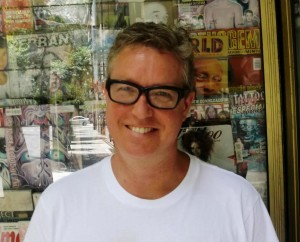
“I think it’s a challenge coming back from JET. But the times and experiences we had will really pay off in the long run even if in the short term it’s hard to see how they will apply.” (Courtesy of Web.mit.edu)
By Sheila Burt (Toyama-ken, 2010-12) for JQ magazine. Sheila is a Chicago-based journalist who blogs at www.sheilaburt.com.
Anime can easily be called a global phenomenon. In the past few decades, several anime TV series and movies have grown so successful that even people with little knowledge of Japanese culture can probably name at least one anime show or character. But how is something that is so labor intensive, costly and culturally quirky able to transcend oceans and inspire rabid fan bases?
A participant in the JETAA Regional Conference held at Harvard University earlier this month, cultural anthropologist Ian Condry (Miyagi-ken, 1988-89) explores this question in his new book, The Soul of Anime. An associate professor of comparative media studies at MIT since 2002, Condry researches cultural movements that go global, looking at how and why certain local phenomenon spread. The Soul of Anime is his second book, followed by Hip-Hop Japan: Rap and the Paths of Cultural Globalization (2006), about the inner world of Japanese hip-hop.
Although initially interested in the business model of anime, Condry changed the focus of his research after learning, rather surprisingly, that “No one gets rich making anime. And in fact, it’s a terrible business model.” Rather than looking at how anime sustains itself business-wise, Condry looks at the power of anime as a platform where, oftentimes, fans and other forms of “collaborative creativity” are at the heart of anime’s success. In order to illustrate this argument, Condry tells the story of Gundam, an anime series about giant robots that first aired in 1979. It was initially a ratings failure, but after fans created everything from encyclopedias to timelines about the show, it became a cult sensation, eventually becoming the longest-running anime series in Japanese history.
“If you look at media only in terms of the genius of the creators or the kind of business model that it fits into, then you miss the power of fans and the importance of the value they add to the products,” Condry explains. “That’s sort of what the book is about. I think now we’re starting to see that all over the place with Facebook, Wikipedia, and Twitter, all these kind of media platforms where the content is made by the users but then there’s this interaction between the users and the platform producers that make all the difference.”
CLAIR magazine “JET Plaza” series: Philippe Arseneau (Miyagi)
Each month, current and former JET participants are featured in the “JET Plaza” section of the CLAIR Forum magazine. The January 2014 edition includes an article by JET alumnus Philippe Arseneau. Posted by Celine Castex (Chiba-ken, 2006-11), currently programme coordinator at CLAIR Tokyo.
***********
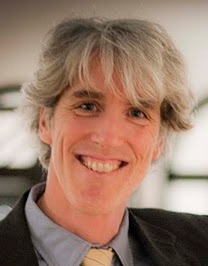
“In my experience, four factors made a difference in this awkward transition from Japan to Canada, from classroom to career, especially with regards to landing and holding a rewarding job: building a professional network; showing initiative; getting involved; and tailoring one’s job to one’s background and interests.”
Philippe Arseneau (Miyagi-ken, 1991-94) is from the Canadian Province of Québec and grew up in Montréal, the world’s second largest French-speaking city. Drawn to Japanese martial arts in his early age, Philippe developed an academic interest for Japan’s economic prowess while studying Labor Relations at the University of Montréal in the late 1980s. Changing his line of study to Anthropology, he specialized on Asian cultures and graduated with a Master’s degree after writing a thesis on “The Emergence of Initiation Rituals in Large Japanese Firms”. The JET Programme came as a fitting opportunity to deepen his understanding of Japan, and in the summer 1991 he was sent to Miyagi Prefecture where he taught English for the first year in the rural community of Tajiri, the second in Sendai, and the third in Natori. Soon after returning to Montréal, he worked as a sales representative for Japan Airlines until 2013. He now is a Japan lecturer at the University of Sherbrooke.
From Classroom to Career
Having graduated from the JET Programme nearly 20 years ago, I was asked earlier this year to deliver a keynote speech before representatives of the Canadian JETAA on the transition, difficult for some, from Japanese classroom to career at home. This paper is a concise version of it.
First, here is some background: I am a Montreal-born Canadian, raised in French, who learned English at school but more intensely through a series of summer jobs as a river guide in Ontario where I met my wife. And a couple of bilingual kids later, I am now pushing 50. I hold a MSc in Cultural Anthropology, with a focus on Japan. Admittedly not a market-oriented diploma. Weeks after submitting my final thesis in late spring 1991, I left to work as an ALT (AET back then) in Miyagi Prefecture where I would stay three years. A new Emperor had been anointed two years earlier. The economic bubble was starting to deflate. Japan banks were still the wealthiest on earth, the nation’s gigantic trade surplus fueled anger abroad and had caused an image problem for years, to which the JET Programme was allegedly meant to provide a partial solution by exposing western graduates to its culture in the hopes they would eventually go home to spread the gospel of a new and open Japan.
Like most ALTs, I taught English, but occasionally French. I also edited a JET prefectural newsletter called “The Miyagi Drum”. Nurturing post-graduates dreams, I spout on a new Japan cultural thesis and applied for doctoral studies at various universities around the world, expecting a grant or some kind of academic interest. Unfortunately, I never got to see the project through because of a career choice. And that brings me to the main topic of this article: professional life after JET. No doubt, the JET Programme can contribute to shaping one’s career as it did mine, though it offers less to those whose professional ambition lies outside the business of education– which was back then and perhaps still today the case with most ALTs. For want of providing highly transferable work skills, the JET experience managed at least to arouse curiosity among potential Canadian employers, but did not clinch me a job in and of itself. In my experience, four factors made a difference in this awkward transition from Japan to Canada, from classroom to career, especially with regards to landing and holding a rewarding job: building a professional network; showing initiative; getting involved; and tailoring one’s job to one’s background and interests.




